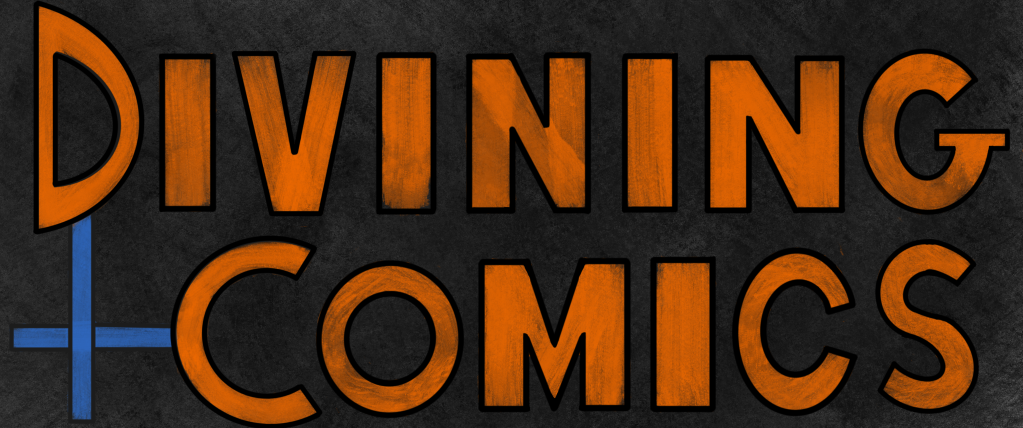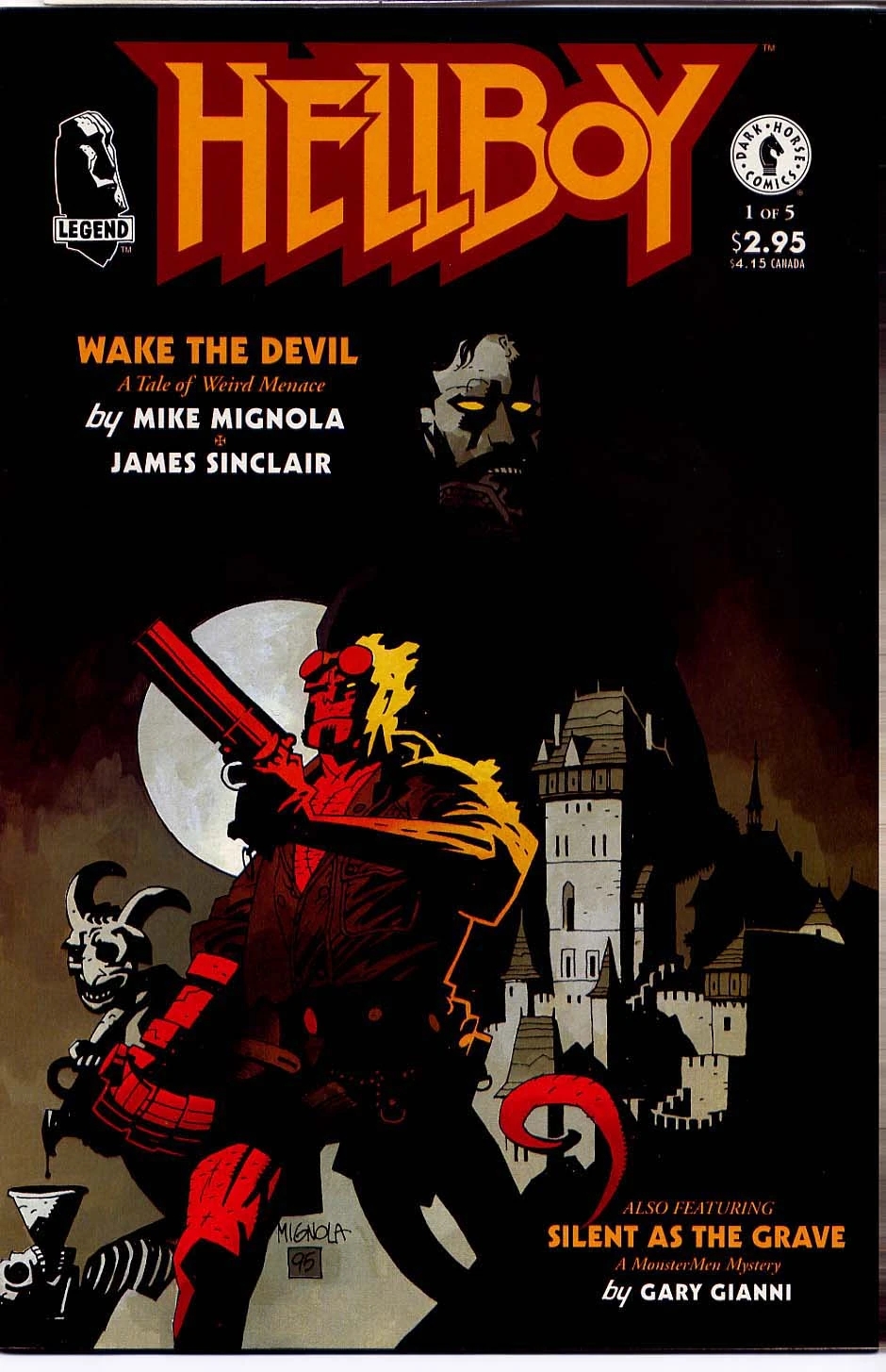Hellboy: Wake the Devil and Making Exposition Interesting
All art is an attempt at telepathic communication through time. When it’s words, it’s more obvious, but images, sounds, movement, and montage are all techniques that allow messages to travel to the future. Each mode has its own unique advantages and disadvantages. Visual media can express that which is beyond words, but words are efficient. They’re magic, a shortcut we’ve invented to hack our brains. It’s much easier to write the word “tree” than to try and describe one every single time.
The usefulness of language has led to a unique “term of art” art term: exposition. It’s communicating all of the necessary background information so for the main artistic elements can actually work as designed. The main problem with this efficiency is that it’s boring. Too much inelegant set-up and the mage’s spell is broken. However, there are many ways to enhance exposition and further trick the audience into falling deeper into the magic of story. Hellboy: Wake the Devil, drawn and written by Mike Mignola, lettered by Pat Brousseau and colored by James Sinclair, demonstrates multiple different ways a skilled magician can weave exposition throughout their work.
One spell set a comic can use is to lean in to one of the most fundamental elements of a comic: the panel. Like the four alchemical elements, the panel is the base form that complexity emerges out of. However, comics aren’t the only form of media that juxtaposes static images in sequence: the slide show, of Silicon Valley and Middle School project fame, does the same.
In this early sequence of Wake the Devil, Mignola and company use the panels of the page as slides in a deck in order to set up the conflict and characters of the story. It’s almost a dramatis personae you’d find in a playbook. However, there is one trick up the magician’s sleeve here that you don’t find in slide shows. Mignola is able to draw the people watching the presentation. This turns what could have been a mere dump of information into something personal. Look at the final panel, a closeup of Hellboy’s face. Even without knowing the specifics of the backstory, it is obvious that this is personal for him. The panel-as-deck allows information to be conveyed rapidly to the reader, but the reaction panels help the reader care.

A surprisingly effective trick a comic can pull for exposition is the asterisked footnote. Often, this was used as a marketing technique, telling you that the relevant information could be found by buying another comic. Ryan North uses a similar technique for jokes and relevant but unimportant asides. Here, however, the use feels most akin to that of a proper footnote.

This odd aside from the strange skeleton man becomes even weirder with the footnote. The event he is referring to took place centuries ago. A simple asterisk and four digits are able to embiggen the scope of story on a monumental scale. Hellboy has found himself in a story that spans potential millennia. The skeleton man could have just said, “that happened in 1492,” but by putting that information in a footnote, it actually makes the revelation hit harder. The reader goes from confusion to mind-reeling understanding.

Perhaps the most useful mode of exposition is the quick and dirty. Simply condense all of the necessary information into a single panel and get it out of the way. This particular panel actually is the first, opening an issue. Ironically, if it isn’t overused, this can function better than inelegantly having a character speak the information as dialogue. It leans into the strength of the written word as compacted complexity. Paraphrasing Alan Moore, there is a reason that grammar and grimoire share the same root, and spell has two meanings. Words are powerful, and well-chosen words can transmit data rapidly and efficiently, so that the meat of the story can move at its own proper pace.
Finally, Mignola and company make exposition interesting by having weird, interesting characters deliver the dialogue. There are at least five different characters that accomplish this, some characters in more than one scene. We’ll talk about three of them here. Any time in this issue that the story “cuts” from Hellboy to Rasputin and the villains, old Grigori Yefimovich is explaining a bit of the broader narrative. Here, he explains some of the ongoing cosmology of the series as well as how he survived dying in an previous arc. But Rasputin is just so dang weird, so the reader draws in by the magnetism of the story instead of being repelled outward.

Mignola clearly enjoyed himself writing and drawing Giurescu’s father, the skeleton man. I could have included any panel sequence from his scene here. This one features almost everything that I’ve been talking about. Strange cosmology and lore with references Hyperboria and Atlantis give Hellboy information about one of the villains of Wake the Devil. To dot the i on this point, the skeleton man gives Hellboy a book with a picture of said villain and gives a quick monologue explaining how she was defeated in the past, information Hellboy later exploits. The skeleton man is a walking exposition homunculus, but because he is so weird and strange, and speaks in such a way that what he is saying isn’t immediately important, it flows naturally to the reader.

My personal favorite in the succession of weird little exposition men is this one. When Rasputin and Ilsa Haupstein have a need, he just pops right out of the ground with exactly the right tool. Before the reader can comprehend to ask who he is, he’s off explaining the history of this Iron Maiden and what it can do for Ilsa. Later, this sense of mystery is greatened when the man talks of his history with Rasputin and the unknown to us Baba Yaga. Where does this man come from, and what are his motivations? It doesn’t matter, because he’s a curious little thing indeed.

There are many more ways a wizard of comics can convey their messages to the reader without boring them. Probably the most straightforward, if not the hardest of them all, is simply to be an engaging writer. But, this isn’t prose. It’s comics, and that means that the image on the page must work in tandem with the magic words. Knowing the many different ways that exposition can be made interesting is one further step along your journey of Divining Comics.


Leave a comment